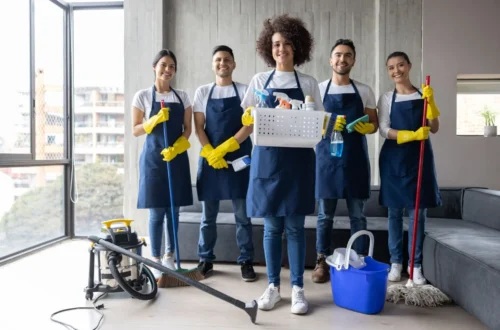Cooking is a passion for many, and to truly enjoy the process, having the right kitchen items is essential. One of the most important categories of kitchenware is pots and pans. The variety of cookware available today can be overwhelming, especially with numerous materials and designs to choose from. This guide will walk you through the different types of pots and pans, helping you understand which ones are best suited for your cooking needs.
-
The Essentials: Pots and Pans
Before diving into the specific types, it’s important to understand that pots and pans are among the most frequently used kitchen equipment. In every kitchen, from homes in the UAE to professional culinary settings, having the right cookware set can make all the difference in how meals are prepared. Whether you’re using non-stick cookware or ceramic cookware, choosing the right item can elevate your cooking experience.
-
Types of Cookware Sets
Cookware sets are often sold as bundles, including different types of pots and pans suited for a variety of cooking styles. A basic cookware set might include:
– Frying pans: Perfect for sautéing, searing, and frying.
– Cooking pots: Ideal for boiling and simmering.
– Saucepan: Used for making sauces, gravies, and soups.
– Soup pot: A larger pot, often used for making stocks or soups in larger quantities.
– Pressure cooker: Used for cooking food quickly under pressure.
– Casserole: Designed for slow cooking in the oven.
These pieces form the foundation of many kitchens and are versatile enough to cover most cooking needs.
-
Materials of Pots and Pans
The material of the cookware plays a significant role in how food is cooked and even how it tastes. Below are the most common materials used in cookware.
- Non-Stick Cookware
Non-stick cookware is extremely popular because it allows you to cook with minimal oil, making it a healthier choice. Non-stick pans are especially useful for cooking delicate items like eggs or pancakes that may otherwise stick to the surface. However, non-stick surfaces require careful handling, as they can be easily scratched, making them less durable over time.
- Ceramic Cookware
Ceramic cookware is known for its excellent heat distribution and non-toxic cooking surface. Unlike non-stick cookware, ceramic pots and pans are free from chemicals like PTFE and PFOA. Ceramic cookware is an ideal choice if you’re looking for an eco-friendly option. A ceramic saucepan, for example, provides even cooking, making it perfect for simmering sauces.
- Granite Cookware
Granite cookware is another non-stick option that is highly durable and scratch-resistant. It’s made from a combination of natural materials and usually has a porcelain coating. Granite cookware is excellent for heat retention, making it a favorite for slow cooking. However, it tends to be heavier compared to other types of cookware.
- Stainless Steel Cookware
Stainless steel cookware is prized for its durability and resistance to rust and corrosion. This type of cookware is often used in professional kitchens due to its robustness. It doesn’t react with acidic foods, so it’s safe to use with a wide variety of ingredients. However, stainless steel is not naturally non-stick, so it requires a bit more oil during cooking to prevent food from sticking.
-
Choosing the Right Cookware for Your Needs
When selecting pots and pans, it’s important to consider what kind of cooking you do most often. For example, if you enjoy making soups and stews, a large soup pot or a pressure cooker would be essential. If you’re a fan of quick meals, a non-stick frying pan is a must-have. Additionally, a good quality cookware set will include items like a frying pan, a saucepan, and a cooking pot that are versatile enough for various recipes.
For those living in the UAE, kitchen equipment UAE markets offer a wide range of options, from high-end kitchenware to affordable yet durable cookware set. Many residents prefer to buy ceramic cookware and granite cookware for their even heat distribution and long-lasting quality.
-
Other Essential Kitchen Items
In addition to pots and pans, there are other kitchen items that you should consider to complete your kitchenware collection. Some of these essentials include:
– Dinner set: Having a good-quality dinner set adds elegance to your meals and is a must-have for hosting guests.
– Cutlery: A well-rounded kitchen requires sharp, durable cutlery for preparing and serving food.
– Kettle: Whether for boiling water or making tea, a good kettle is an indispensable kitchen item.
– Dish rack: To keep your kitchen organized, a dish rack can help manage your washing and drying needs.
– Canister and Drinkware: Storing dry goods in canisters keeps your kitchen organized, while quality drinkware enhances your dining experience.
– Cake mold and Serving dishes: For those who enjoy baking or entertaining, having a cake mold and serving dishes is essential for presentation.
-
Maintaining Your Cookware
Proper care and maintenance can extend the life of your kitchen equipment. For non-stick cookware, avoid using metal utensils that can scratch the surface. Always clean pots and pans thoroughly after each use to prevent food from sticking and causing long-term damage.
For UAE residents, the climate can impact the longevity of your kitchenware, so keeping your kitchen items stored in a dry, cool area is important to prevent corrosion or wear over time.
-
Conclusion
Understanding the different types of pots and pans can help you make informed decisions when it comes to buying kitchen equipment. Whether you prefer non-stick cookware for easy cooking or ceramic cookware for a more sustainable option, the right kitchenware can transform your cooking experience. Beyond pots and pans, investing in quality kitchen items like cutlery, a dinner set, and a kettle will further enhance your kitchen’s functionality.
For those looking to equip their kitchen in the UAE, there are numerous options to explore, from high-end cookware sets to more affordable yet durable choices. Ultimately, choosing the right pots, pans, and other kitchen items will make cooking a more enjoyable and efficient process, no matter what your culinary goals are.
Read more blogs on – nytimer.com





